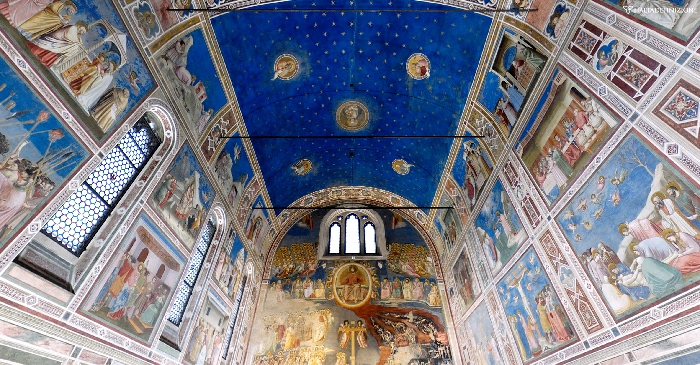5 things to know about Scrovegni Chapel
5 things to know about Scrovegni Chapel (Cappella degli Scrovegni)
The Scrovegni Chapel was consecrated on 25 March 1305 as a chapel-oratory dedicated to Santa Maria della Carità. It is one of the most beautiful masterpieces by Giotto, the father of the Italian art.
5 things to know about Scrovegni Chapel
1
Giotto arrived in Padua in 1303. He was commissioned by the Order of Friars Minor to paint a series of frescoes inside the Basilica of Saint Antony. Giotto was already a well-known artist and Enrico Scrovegni had already known his skills when he had commissioned him the painting for the Arena Chapel.
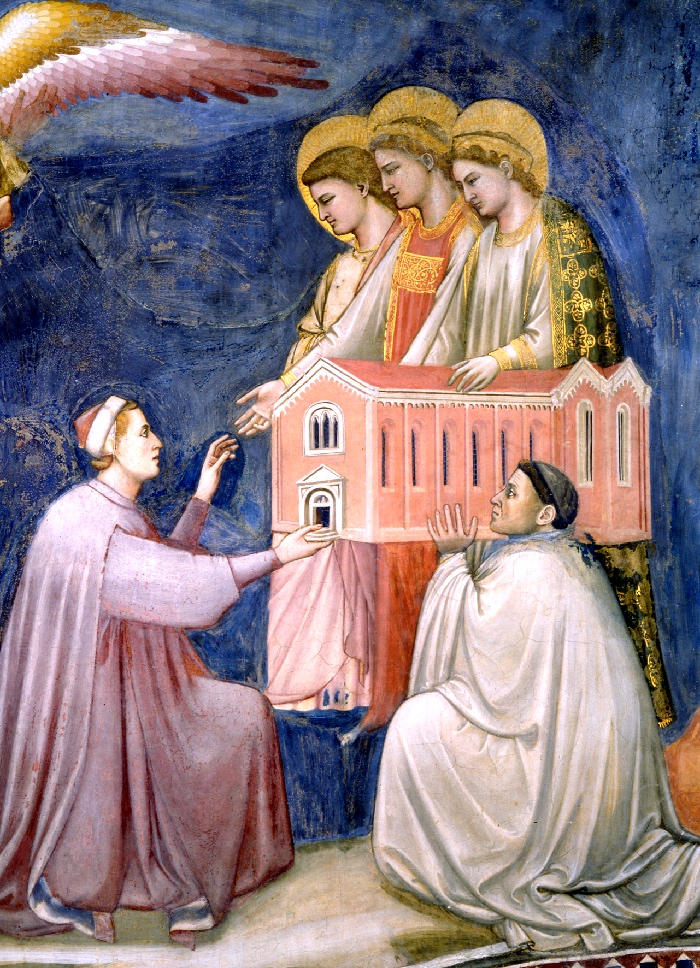
2
Enrico Scrovegni was the wealthiest man in Padua, and he had come into a huge inheritance from his father Reginaldo. His father was condemned by Dante as a usurer in the inner ring of the 17th circle of Hell of the Divine Comedy.
Dante was able to identify Reginaldo by heraldic device around his neck: “ E un che d’una scrofa azzurra e grossa segnato avea lo suo sacchetto bianco mi disse “Che fai tu in questa fossa?” ( “And one who had an azure, pregnant sow inscribed as emule on his white pouch, said to me “what are you doing in this pit?”).
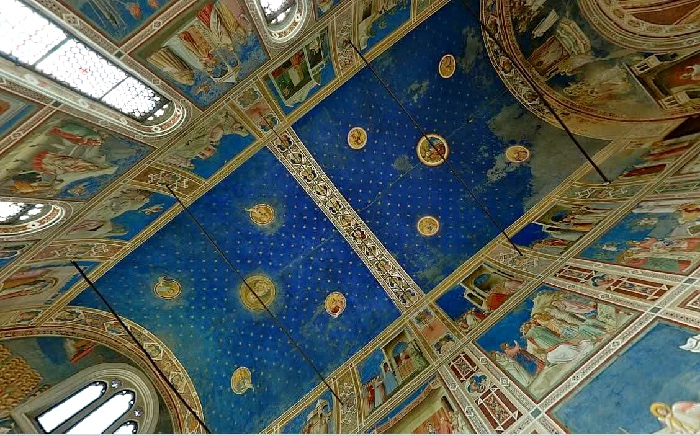
3
The fresco cycle of the Scrovegni Chapel was painted by Giotto very quickly, using the fresco technique. He completed his work after two years, illustrating the Christian message through the story of Christ that became a moving story.
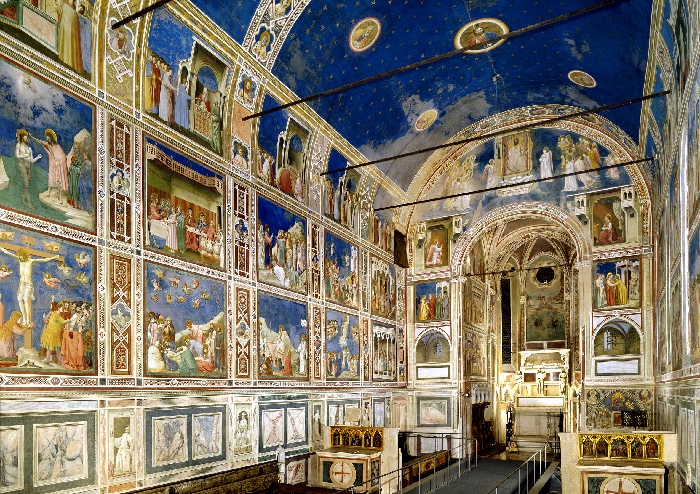
4
Giotto thought that the walls of the room were similar to pages in a book: the spectator was supposed to look at them from left to right, from top to bottom. At first stories of Joachim and Anna, Mary’s parents, then the life of the Virgin Mary and the life of Christ, the Passion and eventually the Last Judgement.

Kiss of Judas, one of the panels in the Scrovegni Chapel.
5
Giotto’s narrative is clear and educational.
He clearly describes the theological message which is the basis of his tale. Characters’ faces communicate universal feelings, such as joy, sorrow, cry, astonishment, and make this private chapel a masterpiece.
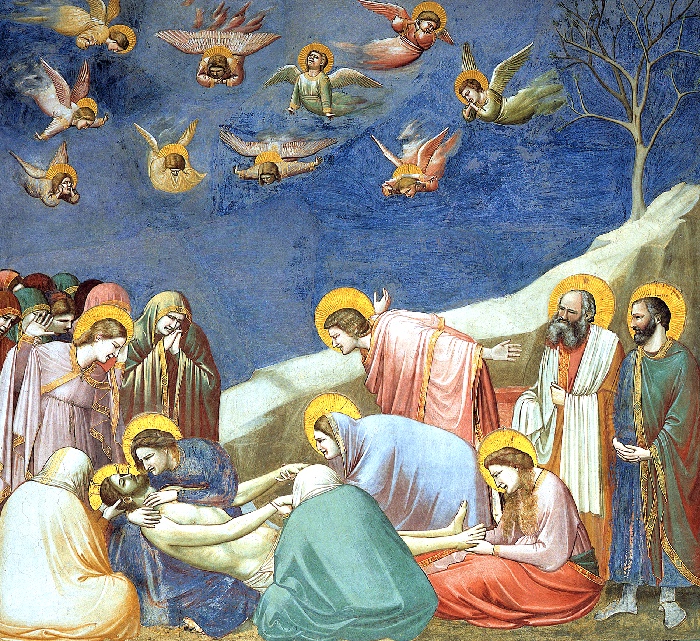
Follow me on:
About me
In this blog, I don't explain the history of art — I tell the stories that art itself tells.


